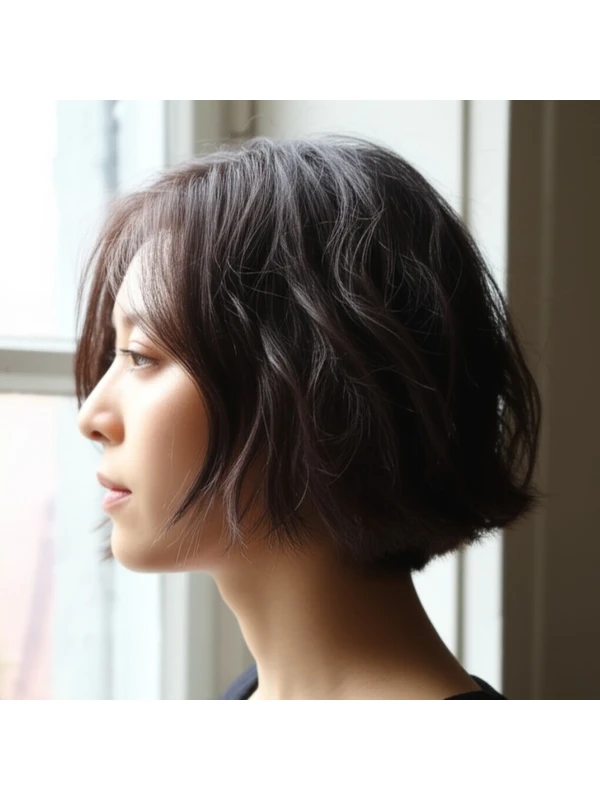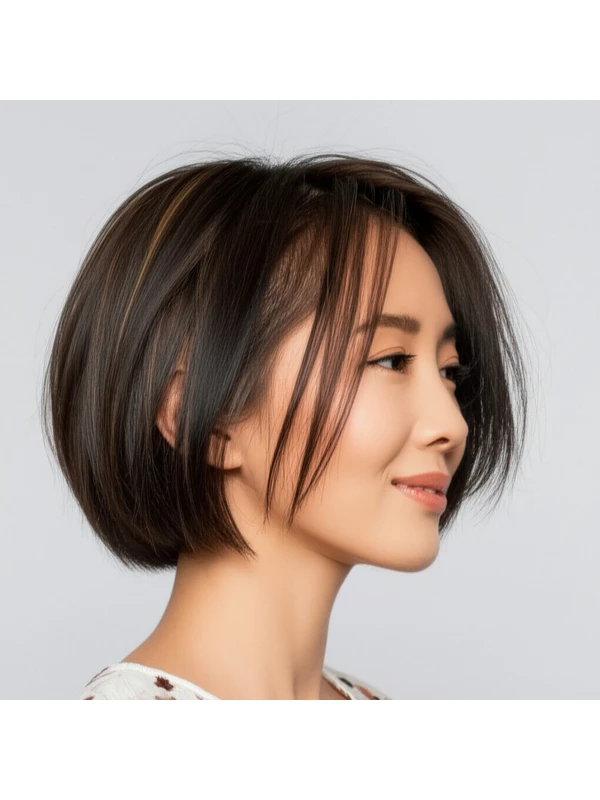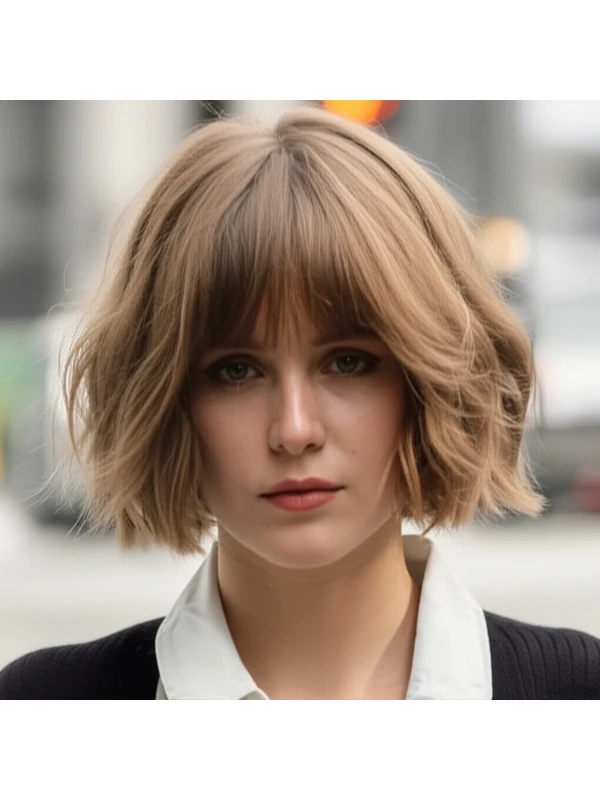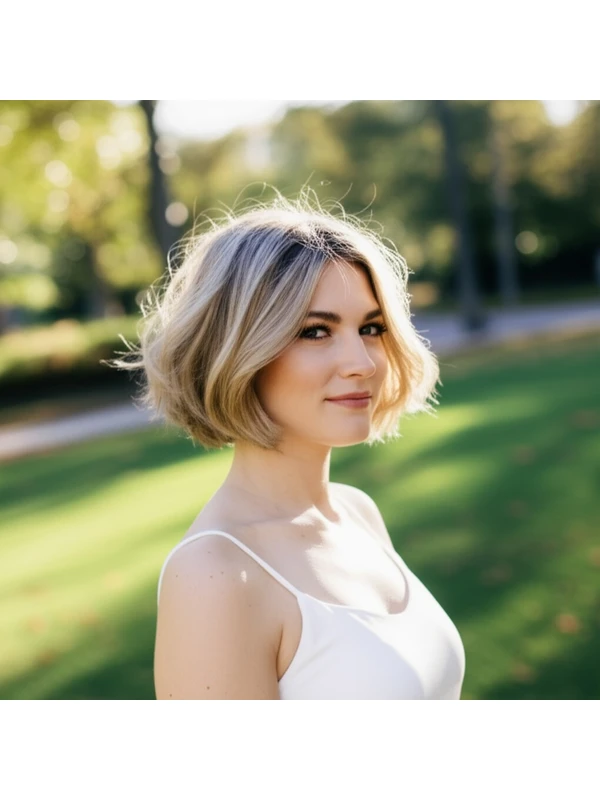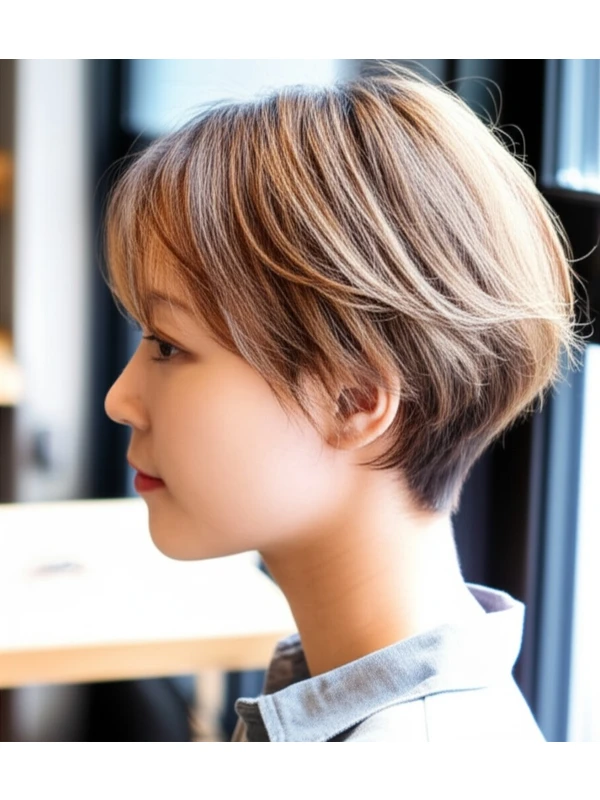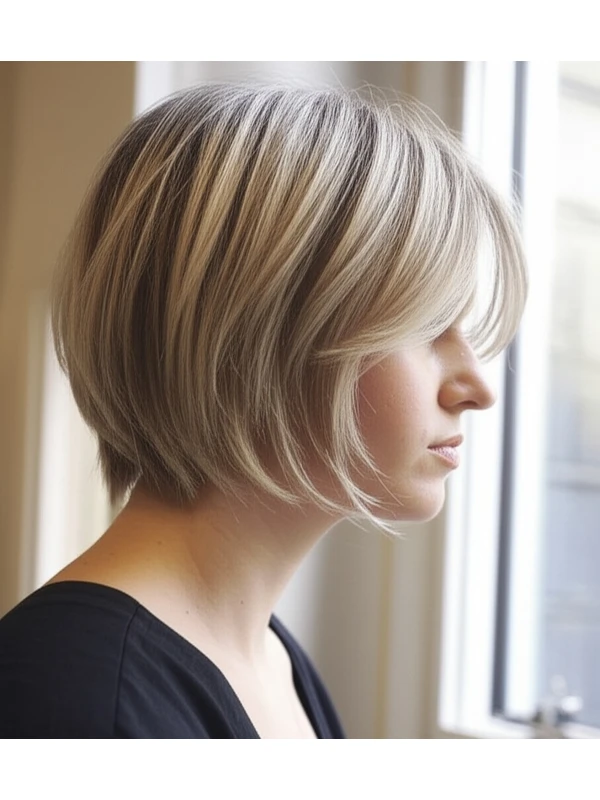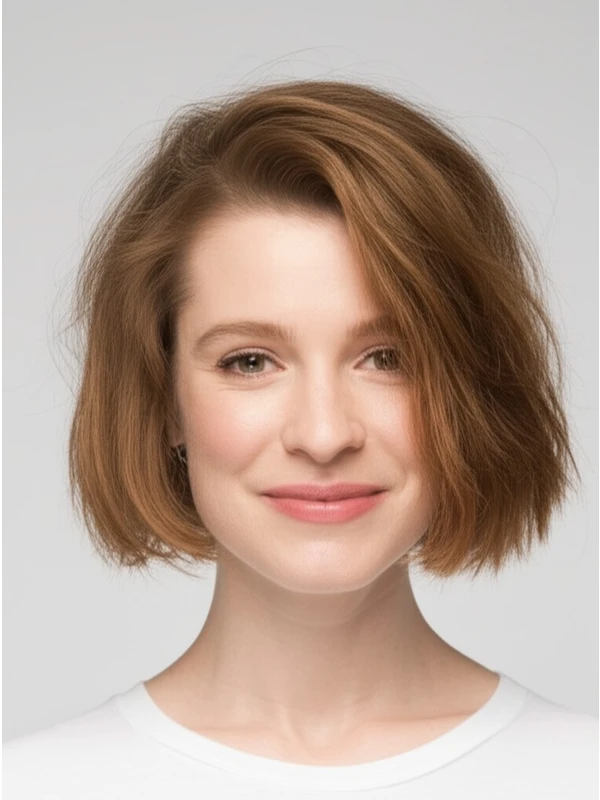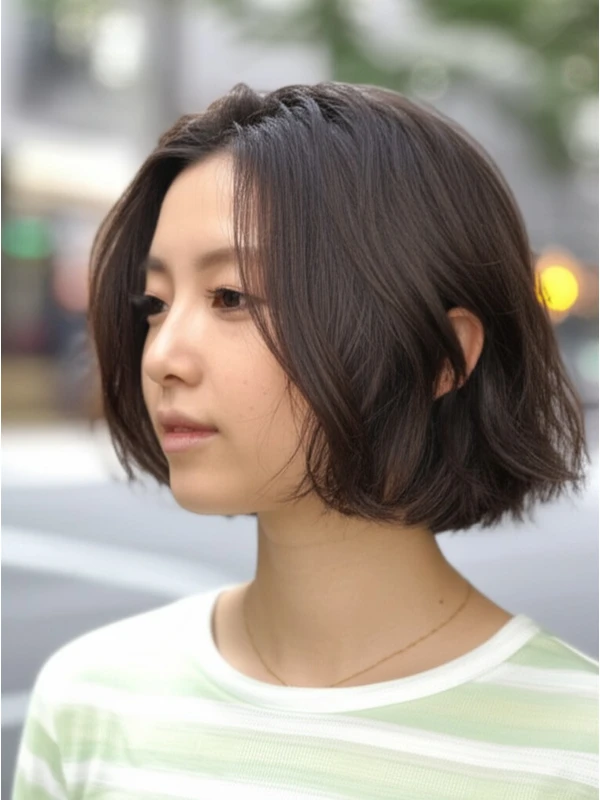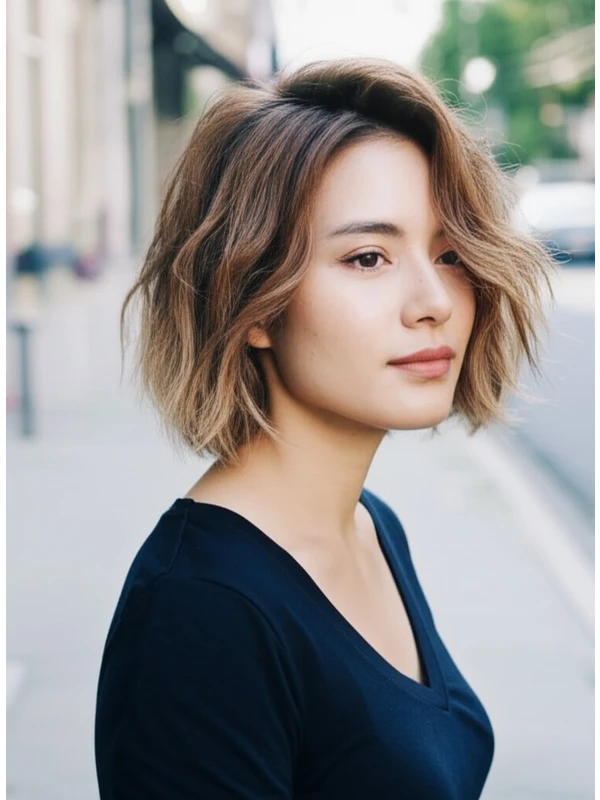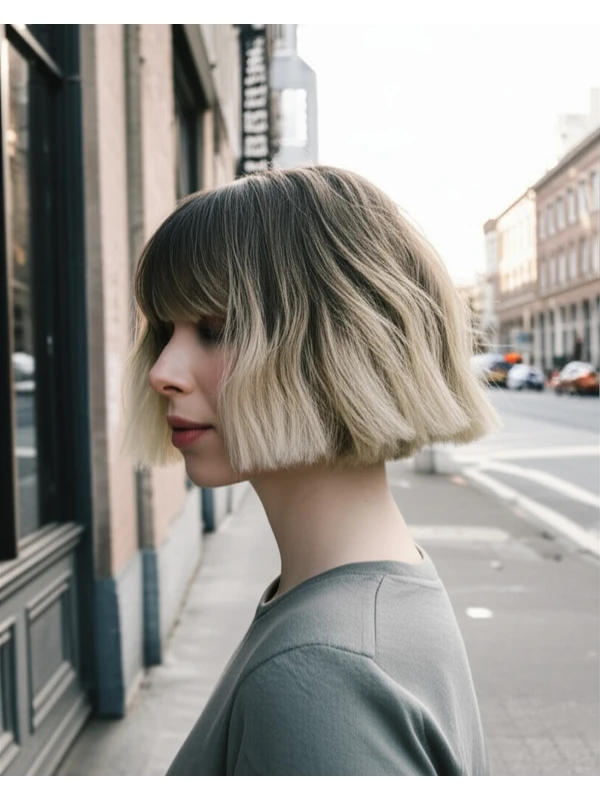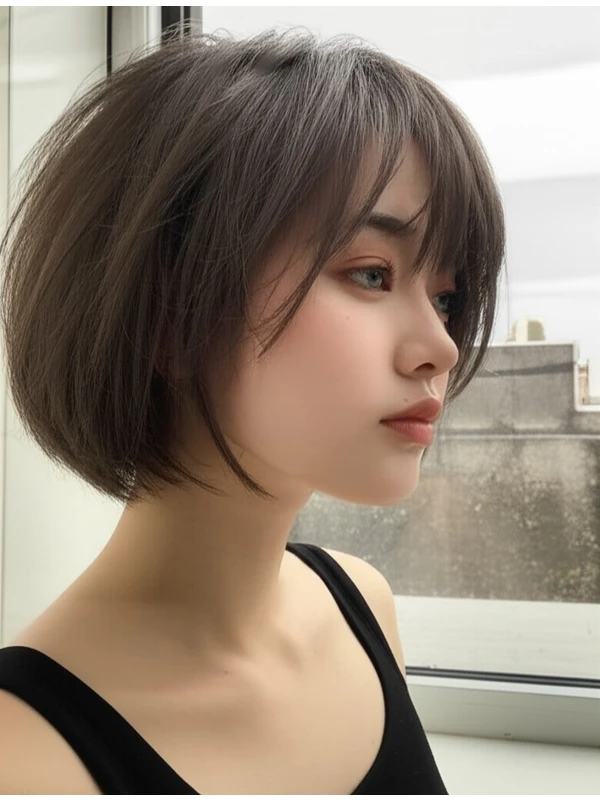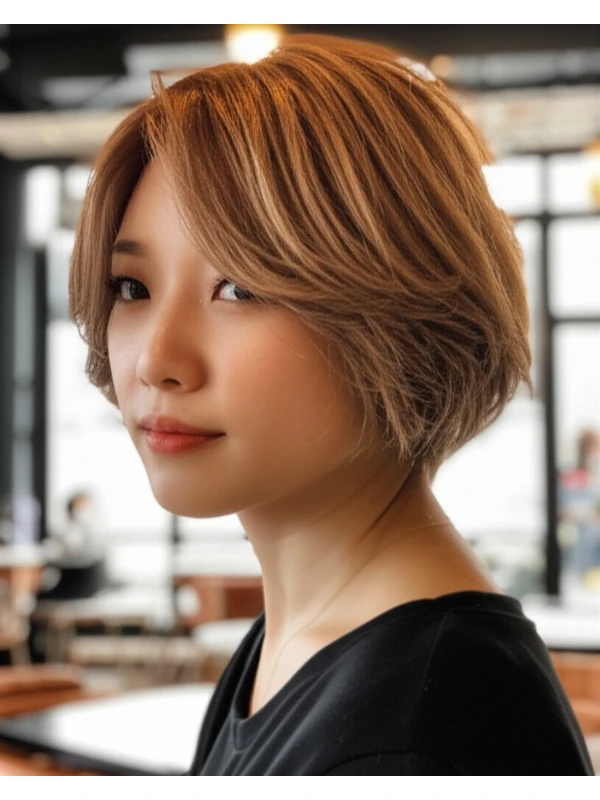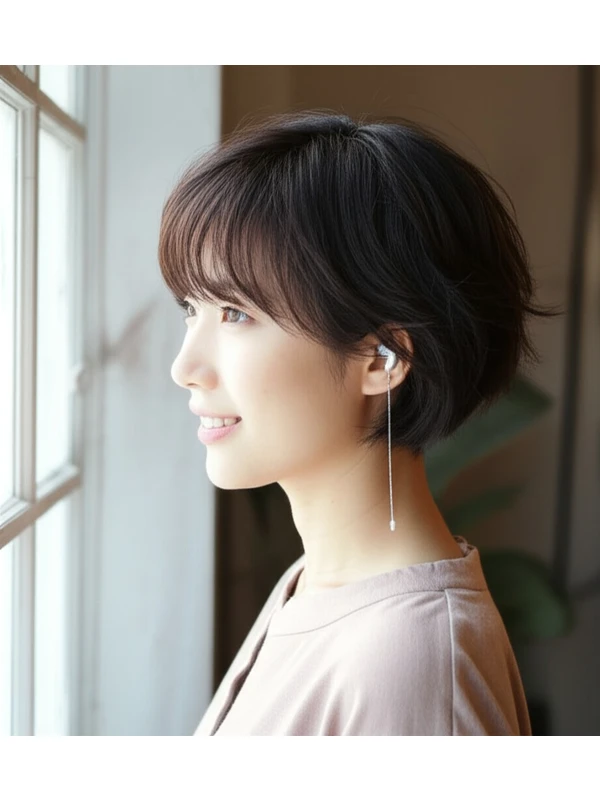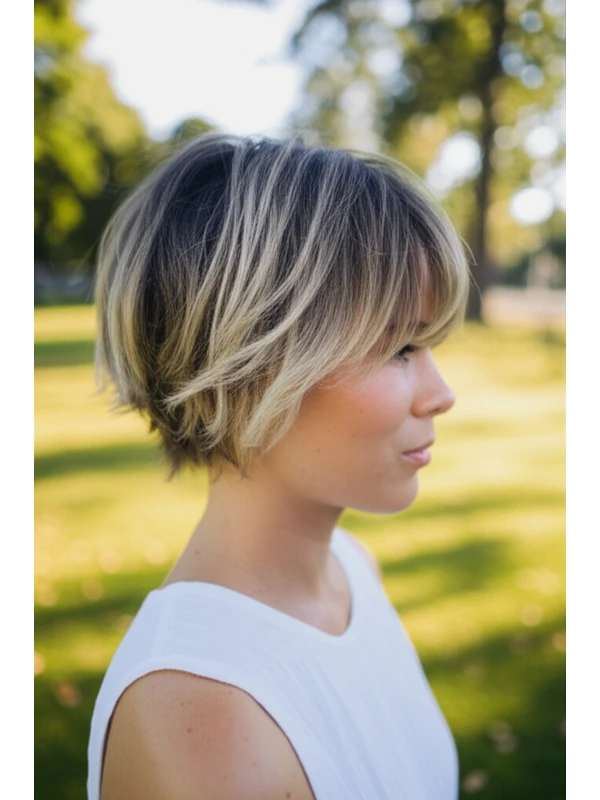#The Timeless Bob with a Middle Part: A Style Guide
The bob haircut has been a classic for decades, and the middle-part variation adds a touch of modern sophistication. This guide will walk you through everything you need to know about this versatile style – from whether it suits your face shape to how to maintain its gorgeous form.
#1) Background & Definition: What is a Bob with a Middle Part?
A bob, at its core, is a haircut that’s shorter in the back and sides than on top. The "middle part" simply means the hair is parted directly down the center of your head. This creates symmetry and highlights facial features beautifully.
- Cut Geometry: It's typically characterized by clean lines, though variations exist (more on those later!). The length can range dramatically, influencing its overall impact.
- Key Features: Symmetry, a defined shape, often with layers for movement or bluntness for a modern edge. The middle part emphasizes balance and draws attention to the eyes.
- Typical Length Ranges:
- Chin-Length Bob: A classic choice that hits around the chin area.
- Lob (Long Bob): Extends past the chin, often reaching collarbone length. This offers more versatility for styling.
- Stack Bob: Shorter in the back and gradually longer towards the front, creating volume at the crown.
- Alternative Names: Center-part bob, symmetrical bob, classic bob (when referring to a straightforward version).
#2) Face Shape Fit: Finding Your Perfect Balance
The beauty of the middle-part bob is its adaptability, but understanding how it interacts with your face shape is key.
- Oval Faces: Lucky you! This style generally flatters oval faces beautifully. The symmetry enhances their natural balance. A blunt cut works well here. Consider a subtle fringe for added softness.
- Round Faces: A bob with a middle part can help elongate a round face, but careful consideration is needed. Avoid overly rounded bobs; opt for more angled layers and slightly longer lengths (lob) to create vertical lines that slim the face. A side-swept fringe or wispy bangs soften the look.
- Square Faces: Soften those angles! The middle part can highlight a square jawline, so choose a bob with soft layering around the cheekbones and chin. Avoid blunt cuts that emphasize angularity. A textured lob is often a great choice.
- Heart-Shaped Faces: A chin-length or slightly longer bob balances wider foreheads and pointed chins. The middle part draws attention to the eyes, creating symmetry. Subtle layering adds movement without adding too much volume at the top.
- Diamond Faces: A bob with a middle part can soften diamond shapes by balancing wide cheekbones. A lob is often flattering, allowing for layers that frame the face and create width at the jawline.
- Oblong Faces: Avoid bobs that are too long or too sleek as they can visually lengthen your face even more. A shorter bob with volume at the crown (a stack bob) can add width and balance. A fringe, whether blunt or wispy, is also a good option.
#3) Body Proportions & Height Guidance: Styling for Your Silhouette
Your height and body shape influence how a bob looks on you just as much as your face shape!
- Petite: Shorter bobs (chin-length or slightly above) are generally more flattering, preventing the style from overwhelming a smaller frame.
- Average Height: Most lengths work well – experiment with chin-length to lob styles.
- Tall: Longer lobs and even shoulder-length bobs can look fantastic on taller individuals, adding balance and proportion.
- Narrow Shoulders: A bob with layers that add volume at the shoulders creates a more balanced silhouette. Avoid sleek, close-to-the-head cuts which can accentuate narrowness.
- Broad Shoulders: A slightly longer bob (lob) or a stack bob with shorter back layers helps to minimize shoulder width.
- Short Neck: A chin-length bob or lob is generally best. Longer styles can emphasize a short neck, so avoid anything that falls too far below the collarbone.
- Long Neck: A longer lob or even a slightly longer style can help balance a long neck and create the illusion of more fullness.
#4) Works Best With Hair Types & Densities: Understanding Your Texture
The bob adapts to various hair types, but understanding how your texture behaves is crucial for achieving the desired look.
- Straight Hair: A sleek, blunt bob with a middle part looks incredibly chic on straight hair. It showcases the cut's geometry perfectly.
- Wavy Hair: Embrace those waves! A layered bob allows natural waves to enhance movement and volume. Consider a slightly longer length (lob) for more wave definition.
- Curly/Coily Hair: A bob can be stunning with curls and coils, but shrinkage is key to consider! What looks like a lob in the salon might end up chin-length after it dries. Consult your stylist about desired length after curl expansion. Layers are essential for removing bulk and encouraging definition.
- Fine Hair: A blunt bob creates the illusion of thickness. Avoid overly layered styles, which can make fine hair look even thinner.
- Medium Hair: Most variations work well with medium density – experiment with layers and textures to find your perfect style.
- Thick Hair: Layers are essential for removing weight and preventing a bulky appearance. A stacked bob is great for adding lift at the crown.
- Shrinkage (Curls/Coils): Always factor in shrinkage! Curly and coily hair can shrink significantly as it dries, so communicate your desired length clearly with your stylist.
#5) Styling Variations: From Sleek to Textured
The middle-part bob is a blank canvas for styling creativity!
- Sleek vs. Textured: A sleek bob uses minimal product for a polished look. A textured bob incorporates layers and tousled waves using texturizing products or heat styling tools.
- Middle vs. Side Part: While this guide focuses on the middle part, switching to a side part instantly changes the vibe – softening angles and adding asymmetry.
- Fringe Variations: A blunt fringe adds boldness; wispy bangs soften the look; curtain bangs frame the face beautifully.
- Occasion Styling:
- Casual: Air-dried with a texturizing spray for effortless cool.
- Office: Sleek and polished, using a smoothing serum or straightener.
- Evening: Add volume at the roots with mousse and use a curling iron to create subtle waves.
#6) Maintenance: Keeping Your Bob Beautiful
Regular trims are vital for maintaining shape!
- Trim Cadence: Every 6-8 weeks, depending on how quickly your hair grows and how precise you want to keep the shape.
- At-Home Routine: Gentle shampooing, moisturizing conditioner, leave-in treatment (especially important for curls/coils).
- Heat vs. Air Dry: Minimize heat styling whenever possible. When using heat tools, always use a heat protectant.
- Product Checklist: Shampoo & Conditioner suitable for your hair type; Leave-in conditioner or cream; Heat Protectant (if using hot tools); Styling Cream/Mousse/Serum; Finishing Spray.
- Estimated Daily Styling Time: 5-20 minutes, depending on desired style and hair texture.
#7) Grow-Out Roadmap: The Evolution of Your Bob
A bob doesn’t just grow out – it transforms.
- Months 1-3: The shape is most defined. Regular trims maintain the initial length and lines.
- Months 3-6: As hair grows, layers may need adjusting to prevent a boxy appearance. A lob begins to emerge if you started with a shorter bob.
- Maintaining Shape: Between cuts, use styling products to enhance texture or smooth flyaways.
#8) Color Pairings: Enhancing Your Bob
Color can elevate your bob’s impact!
- Cool Undertones (ash blonde, cool brown): Silver and icy tones complement the symmetry of a middle-part bob beautifully.
- Warm Undertones (golden blonde, warm brunette): Rich caramel highlights or golden balayage add dimension and warmth.
- Low-Commitment Options: Gloss treatments to enhance shine; root smudging for subtle contrast.
#9) Season & Occasion Guide: Styling for Every Moment
- Spring/Summer: Lighter styling – air drying, beachy waves, lighter color tones.
- Fall/Winter: Add volume and warmth with richer colors and more structured styles.
- Work: Sleek and polished look.
- Weddings: Elegant updo or half-up style showcasing the bob's shape.
- Parties: Textured waves, bold color accents.
#10) Cost & Time: What to Expect
- Salon Time: Typically 45 minutes to 2 hours, depending on complexity and stylist availability.
- Estimated Price Range: Relatively moderate – expect a price point slightly higher than simpler cuts due to the precision required for symmetry.
#11) Pros & Cons: Weighing Your Options
Pros: Versatile, flattering on many face shapes, relatively easy to style (depending on hair type), timeless appeal. Cons: Requires regular trims, can highlight facial imperfections if not styled correctly, may require more product than longer styles for some textures.
#12) Salon Consultation Script: Questions to Ask
- "I'm interested in a middle-part bob. What length would you recommend based on my face shape and hair texture?"
- "Can we discuss layering options? I want [volume/texture/a sleek look]."
- "How can I style this at home, and what products will you suggest for my hair type?"
- “I’m concerned about shrinkage. Can we factor that into the length?”
#FAQs: Your Burning Questions Answered
- Can a middle-part bob work with fine hair? Yes! A blunt cut can create the illusion of thickness, but layers should be minimal.
- Is a middle part suitable for all ages? Absolutely! It's a timeless style that can be adapted to suit any age group.
- How do I prevent my bob from looking boxy? Ask your stylist about soft layering and face-framing techniques.
- What if I want to try bangs with a middle part bob? Curtain bangs or wispy bangs are generally the most flattering options.
- Can I style a middle-part bob in an updo? Yes, but it requires some skill! The symmetry of the cut can be tricky to work with.
- How do I deal with flyaways on a middle-part bob? Use a smoothing serum or anti-frizz product and consider sealing ends with a hairspray.
